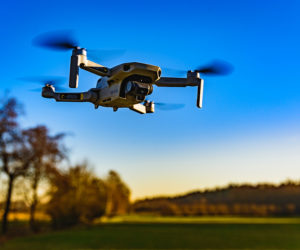
Sorry, your browser is not compatible with this application. Please use the latest version of Google Chrome, Mozilla Firefox, Microsoft Edge or Safari.
Aerospace content

Systemic Sanitation and Environmental Failures at...
This investigative white paper, published by New York Airport News, examines nationwide lapses in airport sanitation, environmental compliance, and contractor oversight. Using the November 2025 UPS cargo plane crash in…
Learn More


The Space Economy Workforce and STEM Occupations
The U.S. space economy now reaches nearly every major industry, and over half of its workforce is in STEM roles—more than double the national average. Software developers, engineers, and advanced…
Learn More


Executive Order 14335: Enabling Competition in the...
The United States is pushing to strengthen its leadership in the commercial space industry by streamlining regulations and fostering innovation. This executive order directs federal agencies to remove barriers for…
Learn More


Human-Teaming in UAS Operations
This white paper introduces a modular Autonomous Safety Agent (ASA) framework for Uncrewed Aircraft Systems (UAS), designed to detect and respond to operational and cybersecurity threats in real time. It…
Learn More


NASA: Assessments of Major Projects
NASA is investing over $74 billion across 38 major projects, with a growing focus on returning astronauts to the Moon through the Artemis program. While many initiatives have stayed on…
Learn More


Advanced Space Technologies
U.S. national security increasingly depends on emerging space capabilities—like satellite servicing, in-space manufacturing, and situational awareness systems—that are now being developed more by startups than by traditional government contractors. These…
Learn More


Executive Order 14304: Leading the World in...
The United States is moving to reclaim leadership in high-speed aviation with a bold push to lift outdated restrictions on supersonic flight. A new executive order directs federal agencies to…
Learn More


Modernizing Critical Embedded Software
Automation and AI can complicate testing practices for embedded systems. But they’re also the solution. To stay ahead of the competition, embedded teams must modernize now. Download this whitepaper to…
Learn More


U.S. Space Command: Air Force’s Reevaluation of...
GAO’s May 2025 report reviews the Air Force’s reevaluation of the permanent headquarters location for U.S. Space Command. Despite a multi-phase process that reaffirmed Huntsville, Alabama as the preferred site,…
Learn More


Measuring Space Manufacturing Plant Utilization...
Space manufacturing plays a central role in the U.S. space economy, accounting for over a quarter of its GDP. This paper from the Bureau of Economic Analysis introduces two important…
Learn More


Shaping the U.S. Space Launch Market: Extending...
The U.S. currently leads the global space launch market, with SpaceX dominating five out of every six American launches. While this leadership reflects technological innovation and reliability, it also highlights…
Learn More


Space Accomplishments 2021-2024
From 2021 to 2024, the U.S. took significant strides in advancing space commerce and safety. Key initiatives included developing a modern space traffic safety system to address orbital congestion and…
Learn More


The S1000D IETP Data Analytics and Product Feedback
As artificial intelligence (AI) and data analytics evolve, their role in product support and maintenance will only strengthen. This white paper emphasizes the importance of investing in these technologies, showing…
Learn More


NASA’s Space Sustainability Strategy
NASA defines space sustainability as the ability to maintain the conduct of space activities indefinitely into the future in a manner that is safe, peaceful, and responsible to meet the…
Learn More


NASA’s Climate Adaptation Plan
NASA’s policy requires the integration of climate considerations into its policies, strategies, and partner engagements. The agency commits to identifying and implementing adaptation strategies to prevent mission impacts from climate…
Learn More


